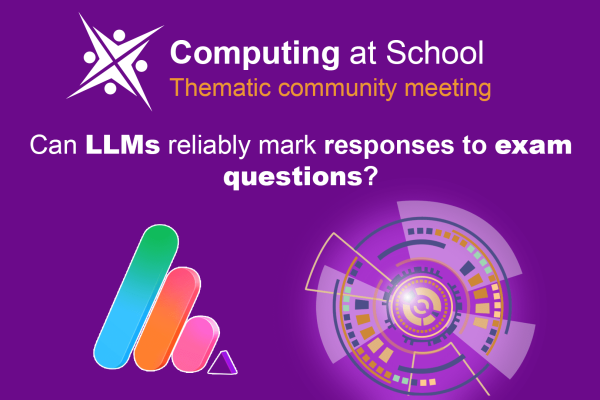Section 1: Why This Blog Matters – A Quiet Shift with Loud Implications
AI in education is no longer a distant prediction. It’s already here quietly embedded in student homework, subtly used by teachers drafting lesson plans, and often misunderstood by school leadership. Yet most UK educators still don’t feel equipped to make informed, confident decisions about AI in their own practice.
A recent BCS report revealed a telling reality: 67% of teachers were first introduced to AI through ChatGPT, yet 64% aren’t using it in any formal capacity. Fewer than 1 in 10 schools are actively teaching students how to use AI tools responsibly. And despite growing awareness, 41% of teachers say their school has no clear AI policy. Many don’t even know if one exists.
The truth is: AI is impacting classrooms whether we’re ready or not. And most teachers are being left to figure it out alone.
This blog exists for a simple reason: to close the gap between AI hype and real teacher support.
We’re not here to sell a shiny future or fan the flames of fear. Instead, we’ll look clearly at what AI is already doing, where schools are struggling, and what kind of practical, ethical, and human-centred approach can guide us forward.
More than anything, we want to help UK teachers ask:
- What does responsible AI use look like in a real classroom?
- How do I begin, even if I’m not a Computing teacher?
- And how do I support students to engage critically, not passively, with AI tools?
This isn’t a checklist blog. It’s a grounding place to reflect and move forward together.
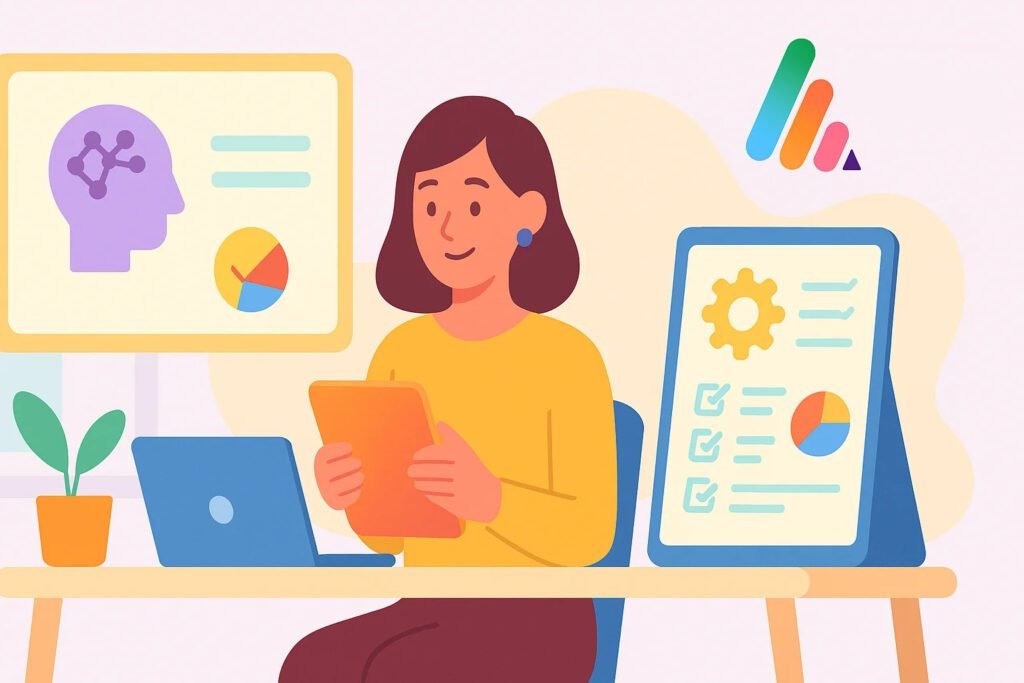
Table of Contents
Section 2: What the BCS Report Tells Us and What It Doesn’t
That’s exactly what the BCS report set out to understand whether UK teachers feel equipped to face AI’s growing role in education.
Some of the stats are sobering:
- 67% of teachers first encountered AI through ChatGPT but.
- 64% say they’re not using AI at all in their professional practice.
- 41% of schools have no AI policy in place and 17% of teachers aren’t sure if one exists.
- Only 6% of schools explicitly teach students how to use AI responsibly.
At first glance, the message seems clear: AI is knocking loudly at the classroom door and many schools haven’t answered.
But here’s what the report doesn’t say.
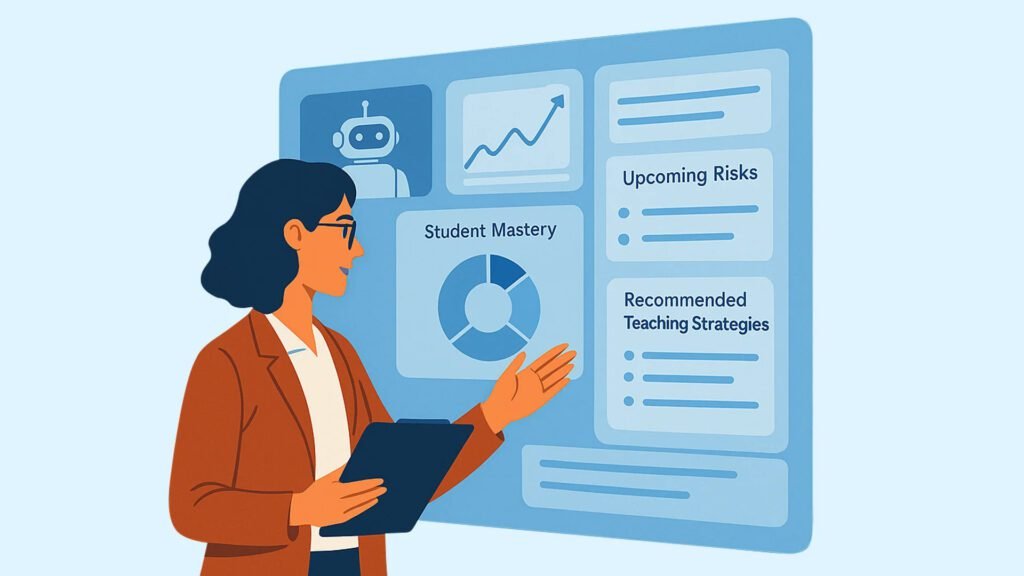
There’s a growing gap between what students are already doing with AI and what teachers are prepared to support. Students are writing essays, answering past papers, even generating revision plans using tools like ChatGPT. Teachers, meanwhile, are still asking:
“Am I even allowed to use this in my lessons?”
That permission anxiety is real. So is the lack of time, training, and confidence.
But here’s the good news:
The teachers who have started using AI aren’t just coping, they’re innovating. They’re generating quizzes, adapting worksheets for different reading levels, summarising texts, even designing coding tasks with AI-assisted feedback.
And that leads us to the bigger opportunity:
👉 It’s not just about catching up to AI, it’s about building a classroom where students and teachers learn to use it together.
Section 3: Beyond the Headlines: How AI Is Already Supporting Teachers
While most headlines focus on fear of plagiarism, bias, and cheating, the reality inside classrooms is more balanced.

Here’s what’s already happening in UK schools:
🔹 Quick Differentiation
Teachers are using AI to adjust a worksheet’s reading level in seconds. Instead of rewriting handouts from scratch, they type:
“Make this reading text suitable for a Year 8 student with lower literacy.”
It’s not perfect, but it saves 30–40 minutes of prep time every time.
🔹 Personalised Feedback
Some teachers are testing AI tools to provide draft feedback on student writing. They still review and personalise that feedback but now, they can support more students in less time.
“I used to give written feedback to 6–8 students per night. With AI’s help, I can now give all 28 something meaningful within 24 hours.” – KS4 English Teacher, North London
🔹 Lesson Planning & Creativity
AI is helping spark ideas when energy is low. Stuck planning a PSHE lesson on digital safety? Prompting ChatGPT with “create a starter activity for Year 9 about AI risks and social media” gets the ball rolling.
Some are even using AI to build coding challenges, creative writing starters, or escape room scenarios linked to science topics.
🧭 But here’s the catch:
Most teachers doing this aren’t following a clear school policy. They’re experimenting quietly, sometimes out of hours, unsure whether what they’re doing is “allowed”.
That’s not sustainable or fair.
Section 4: From Curiosity to Confidence – What Teachers Need to Use AI Well
If teachers are already using AI even without formal training what would it take to do it with confidence, clarity, and impact?
The answer isn’t just “more tools.” It’s more support.
🔍 The BCS Report Reveals a Readiness Gap
The BCS (The Chartered Institute for IT) survey of over 5,000 UK secondary school teachers found:
- 64% aren’t using AI in their teaching at all.
- 41% say their school has no clear AI policy.
- Only 6% of schools teach students how to use AI responsibly.
Teachers aren’t unwilling; they’re under-supported.
Without clear expectations, time to explore, or peer guidance, even the most creative teachers will hesitate to innovate.
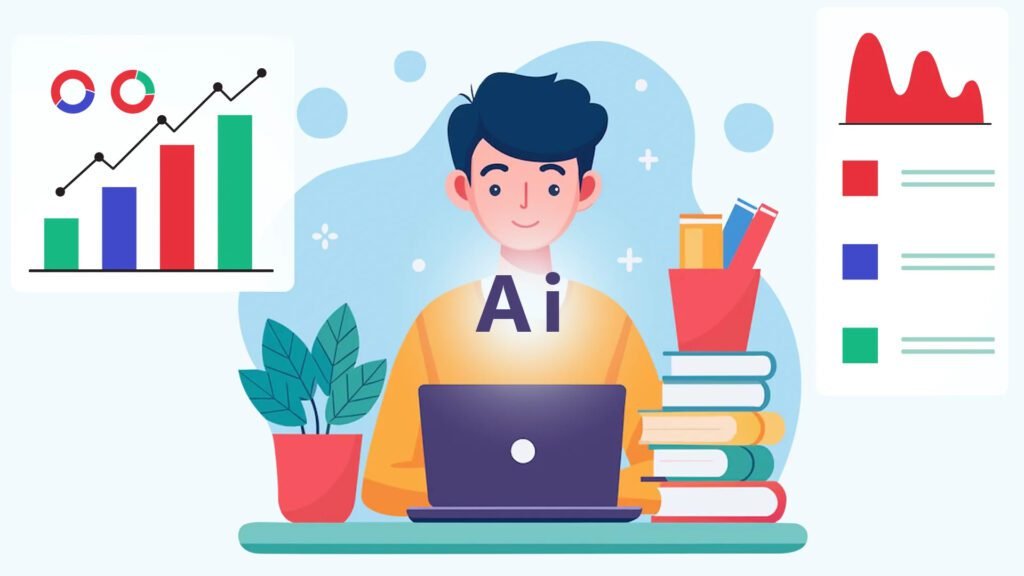
🎯 What Teachers Actually Need
Let’s cut through the noise. Based on the data and classroom conversations, here’s what helps:
1. Time to Explore Without Guilt
Teachers need protected time to try AI tools, experiment with prompts, and reflect on what worked without feeling they’re falling behind on marking.
2. Practical CPD That Goes Beyond Theories
Instead of abstract webinars on “The Future of AI,” educators need:
- Real lesson examples (e.g., AI marking vs. human marking)
- Classroom-ready prompt banks
- Walkthroughs on tools like Teepee that offer feedback, not just answers
3. A Whole-School Policy Teachers Understand
Policies shouldn’t just live in staffroom drawers. A strong AI policy:
- Clarifies what’s encouraged vs. restricted
- Sets boundaries for student use
- Explains how AI aligns with school values (e.g., academic honesty, equity)
4. A Culture That Sees AI as a Teaching Ally
Perhaps most importantly, teachers need permission to be curious. Leaders must shift the narrative from:
“Be careful you might misuse AI.”
to
“Try it, share your insights, and we’ll learn together.”
Section 5: Students Are Already Using AI Are We Teaching Them How?
While teachers are cautiously experimenting with AI, many students are already racing ahead often without guidance.
A quiet shift is happening in classrooms across the UK: homework written in Americanised English, inconsistencies in tone, or answers that feel “too perfect.” These are telltale signs of AI-assisted work. And teachers are noticing tasks. Quiet sessions with exam-style questions. Make it boringly normal, so it’s not terrifying later.
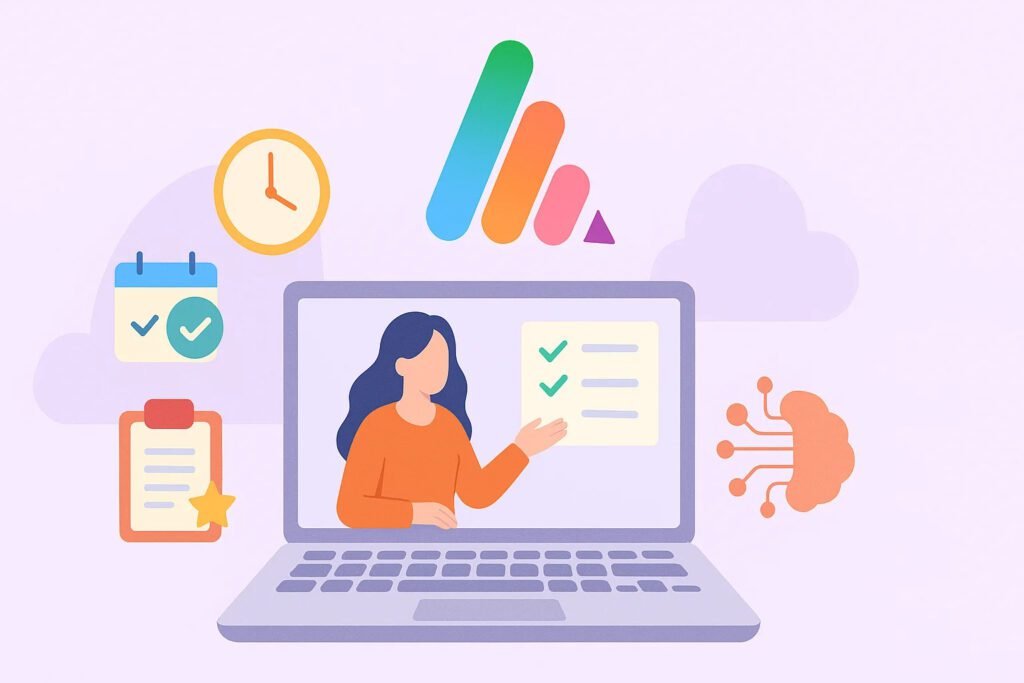
📊 What the Data Tells Us
According to the BCS report:
- Teachers widely suspect AI is being used in student submissions
- 84% have not adjusted their assessment strategies to account for AI
- Only a small minority actively check for AI-generated work
In other words, students are learning to use AI without being taught how to use it well.
🧠 Why This Matters
If students rely on AI to complete tasks without understanding the content, we’re not just facing plagiarism, we’re risking skill atrophy.
Critical thinking, creativity, and written fluency don’t develop when shortcuts replace struggle.
And yet, banning AI outright is not the solution.
🎯 What Teachers Can Do Instead
Here’s how forward-thinking educators are adapting:
✅ Shift the Task Design
Rather than fighting AI, many are changing the types of tasks they assign. For example:
- “Write a debate speech include your own view and cite AI-generated counterpoints”
- “Use an AI tool to help plan your essay, then reflect on what you changed or kept”
This keeps students accountable and AI use transparent.
✅ Teach AI Literacy Alongside Subject Knowledge
Students should understand:
- What AI can and cannot do
- How to verify AI outputs
- When it’s appropriate to use AI tools and when it’s not
This isn’t just digital literacy. It’s academic integrity in the age of automation.
Section 6: Ethics in the Age of AI What Every School Must Confront
AI might promise efficiency and personalisation, but without guardrails, it can quietly reinforce bias, inequity, and privacy risks.
These aren’t just theoretical concerns they’re already surfacing in UK classrooms.

⚖️ Bias in AI Systems
Most AI tools are trained on data that isn’t fully representative. That means they can:
- Misinterpret student responses due to dialect or cultural phrasing
- Suggest unfair feedback that penalises neurodivergent or multilingual learners
- Recommend tasks or reading levels based on patterns that lack nuance
If unchecked, AI can amplify existing inequalities rather than correct them.
🔒 Privacy and Consent
Many AI tools collect student data to “personalise” results, but how that data is stored, processed, or shared is often unclear. Teachers and schools must ask:
- Is this tool GDPR-compliant?
- Have parents and students been informed and consulted?
- Can we audit how decisions are made by the AI?
This is especially crucial when dealing with minors or vulnerable learners.
🏫 What Schools Can Do
The BCS report and experts from organisations like Computing at School recommend a clear, school-wide approach:
- Create a Transparent AI Policy
- Define which tools are allowed, what data is collected, and how students are protected
- Make sure this policy is visible to staff, students, and parents
- Define which tools are allowed, what data is collected, and how students are protected
- Model Responsible AI Use
- If teachers use AI to mark or plan, they should explain how
- This builds a culture of openness, not secrecy
- If teachers use AI to mark or plan, they should explain how
- Prioritise Equity in Implementation
- Ensure access to AI tools isn’t limited to well-resourced students
- Train teachers to recognise bias in AI feedback and intervene where needed
- Ensure access to AI tools isn’t limited to well-resourced students
🧭 External Resource
The AASA Guide to Ethical AI Use in Schools offers a digestible framework for school leaders.
Read more →
Section 7: From Theory to Practice Smarter Ways to Use AI in the Classroom
If policies stay on paper and training doesn’t reach the classroom, nothing changes. Here’s what teachers across the UK are already trying and what’s actually working.
🧠 1. AI-Assisted Planning and Differentiation
- Use generative AI (like ChatGPT or Google Gemini) to draft differentiated tasks for mixed-ability groups. Prompt it with:
“Give me 3 tiered comprehension questions based on the topic ‘climate change’ for Year 8.” - Create scaffolds for EAL or SEN students in seconds, saving time for individual support.
💡 This doesn’t replace your judgement it enhances your creativity.
🧪 2. Instant Quiz Feedback with Tools like Teepee
Teepee.ai allows students to:
- Attempt GCSE-style questions by topic
- Get instant feedback with improvement tips
- Track revision gaps without teacher input
This kind of smart feedback system supports retrieval practice, builds independence, and cuts teacher workload in half.
📜 3. Create Engaging Prompts, Not Just Worksheets
Rather than traditional tasks, use AI to:
- Generate mystery scenarios in history or science
- Role-play examiners to help students revise
- Recast homework into formats students prefer (comic script? podcast brief?)
This is about making AI a tool for depth, not shortcuts.
Section 8: Where to Find Trusted Support & Resources
You don’t have to figure this out alone. Whether you’re exploring AI tools for the first time or leading your school’s digital strategy, there are credible, teacher-first resources to guide you.
📚 UK-Based Communities and Guidance
- Computing At School (CAS):
Offers free CPD, webinars, and forums for teachers across all subjects — not just Computing. Their recent BCS report summary is essential reading.
→ Best for: peer support, policy insights, and practical tips. - Education Endowment Foundation (EEF):
While not AI-specific, their research-backed guidance on effective teaching strategies can help frame how new tools like AI fit into proven pedagogy. - BBC Bitesize – GCSE Revision Section:
When paired with tools like Teepee, students get structured content and feedback.
→ Visit GCSE revision tips on BBC Bitesize
🛠️ Tools That Support Teachers and Students
- Teepee.ai
If you want to see how AI feedback works in practice, Teepee lets you explore an exam question experience — no logins, no sales pitch.
→ Try AI Marking in Action
- Edutopia.org
Offers use-case ideas for AI in lesson planning, student engagement, and even visuals, all grounded in classroom realities.
Section 9: Final Thought – AI Won’t Replace You. But It Might Empower You.
AI in education isn’t just about algorithms or automation. It’s about giving teachers the time, insight, and tools to focus on what really matters, human connection, personalised feedback, and nurturing student potential.
The growing presence of AI tools doesn’t mean teachers become obsolete — it means they become more impactful. While AI can scan essays, suggest quiz questions, or highlight gaps in learning, only you can spot the student who’s quietly falling behind. Only you can reframe a lesson in a way that makes it click. Only you can bring emotional safety and cultural awareness to a classroom.
But embracing AI doesn’t have to be overwhelming or radical. Start small. Ask:
- Where can this tool save me time?
- Can it help personalise learning more efficiently?
- What support is already out there?
And if you’re not sure where to begin, Teepee’s experience page lets you try AI feedback instantly no sign-up, just one GCSE question, and a chance to see AI in action.
The future of AI in education isn’t just technical. It’s ethical, creative, human and deeply collaborative. Teachers won’t be replaced. But those who use AI wisely? They might just redefine what’s possible in the classroom.
